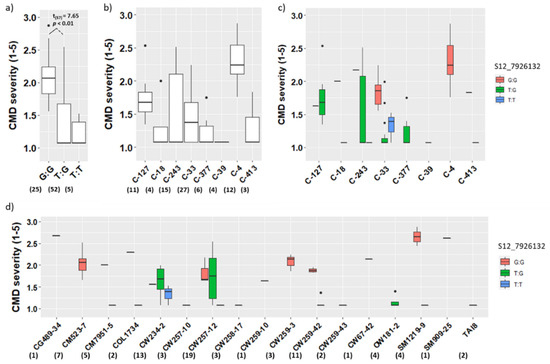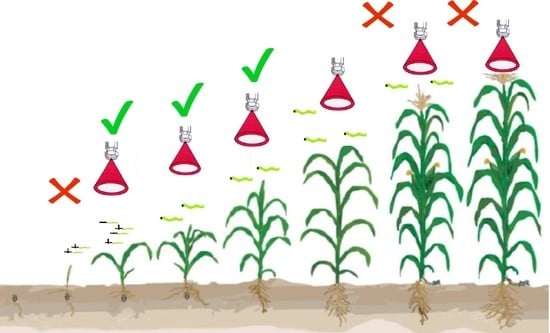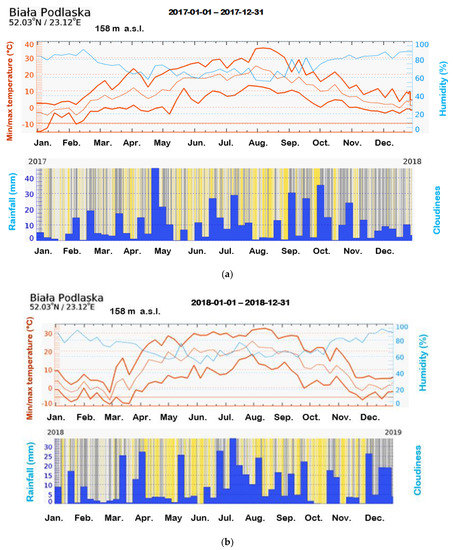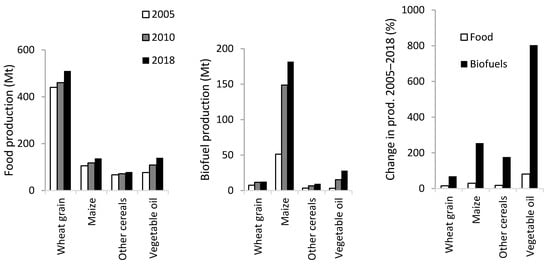Agriculture 2021, 11(9), 829; https://doi.org/10.3390/agriculture11090829 - 30 Aug 2021
Cited by 14 | Viewed by 5929
Abstract
Cassava (Manihot esculenta Crantz) is a crucial staple crop, and provides carbohydrate energy to more than half a billion people in the tropics. Cassava mosaic disease (CMD) is the most important disease of cassava in Africa. Since Sri Lanka Cassava Mosaic Virus
[...] Read more.
Cassava (Manihot esculenta Crantz) is a crucial staple crop, and provides carbohydrate energy to more than half a billion people in the tropics. Cassava mosaic disease (CMD) is the most important disease of cassava in Africa. Since Sri Lanka Cassava Mosaic Virus (SLCMV) was first reported in South East Asia in 2015, establishing sustainable solutions to CMD has become a top priority for the cassava program at the International Center for Tropical Agriculture (CIAT) and its partners. In the present study, we screened two populations for CMD resistance: VNM142, 142 clones collected from farms throughout Vietnam, and CIAT102, 102 clones resistant to CMD or mites, which were introduced from CIAT. High broad-sense heritability was observed in all the trials (>0.80). From the population VNM142, eight clones showed high CMD resistance with CMD severity scores less than 2.0. Two resistant clones had the same DNA fingerprinting with the accessions CR63 (PER262 or TAI9) and KM57 (VNM8) in the genebank, respectively. To our knowledge, this is the first report of CMD resistance in the genebank at CIAT. We also used the two populations to validate the CMD markers S12_7926132 and S14_4626854. Both markers explained 51% of the population variance in the segregating population CIAT102, but only 11% in the diverse population VNM142. Thus, we concluded that the two CMD markers could not be used to select for CMD resistance in diverse populations, but could predict the CMD resistance in segregating populations when the susceptible parents do not have resistant marker alleles and the resistance of the CMD2 donors is confirmed.
Full article
(This article belongs to the Special Issue Trait Genetics and Molecular Mapping of Genes in Food and Forage Crops)
►
Show Figures













